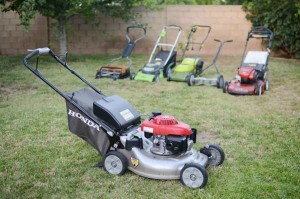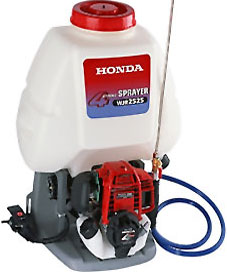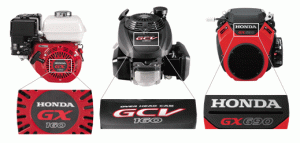A used Honda mower can be a great addition to your lawn care arsenal, whether you want a spare mower for your landscaping business or you’d like something that’s the price of a big box store mower without having to settle for low quality. It’s also a good time of the year to pick up a mower as owners pick up new models on end-of-season sales and make plans to move before next spring. If you decide to go this route, what should you look for?
Checking the Engine
Honda’s legendary reliability aside, engines are usually the last thing to break on mowers. However, there are a few things worth checking before testing the mower:
The air filter should be easily accessible and can usually be opened without tools. Wipe off any debris and check for damage: if the elements are full of dirt, it’s likely that the rest of the mower hasn’t been taken care of, either.
The general engine condition can be assessed by checking the spark plug. If the electrode end is light gray or brown, everything is running correctly. Ash indicates misfiring, oily build-up indicates oil or too much gas in the combustion chamber, and soot is caused by a rich fuel mixture, usually caused by a clogged air filter.
Look down through the screen next to the starter to inspect the flywheel. It’s held onto the stub shaft by a small square key. If the key is missing, the ignition timing will be off. If the holes for the key are damaged, the flywheel or crankshaft may need to be replaced, which is a difficult and costly repair.
Deck
Minor surface rust is nothing to worry about, but dents can hamper the mower’s ability to generate a vacuum to pull grass towards the blade. Severe dents can shift the position of the engine mount, making the blade cut at an angle.
Check the levers to make sure they move freely and the cables are moving parts on the engine and deck. If it has a bag, take it off and make sure the rear of the deck opens all the way when the mower is set to bagging mode.
Check the condition of the blades and underside of the deck. When tipping a walk-behind mower, always tilt it so that the carburetor and fuel tank are pointed up. There should be no play in the blade. If it’s cracked or worn, it will need to be replaced. Uneven wear can cause vibrations when running.
Testing the Mower
Before starting the motor, make sure there’s oil inside the crankcase and the fuel line is free of cracks to ensure your test run won’t end with a damaged motor or a fire. The dipstick is designed to measure fuel when placed at the edge of the filler neck; if it’s pushed or screwed in, the oil level will read too high.
Make sure to ask about how old the fuel in the tank is: modern gas doesn’t age well, which can lead to hard starting. Even when treated with a stabilizer, fuel shouldn’t be used if over three months old.
Scalloping indicates a misaligned blade. This may be a matter of the wheels not being at the same height setting, but if they’re equal, there is something wrong with the deck or blade.
If the blade looked fine during the inspection, severe vibrations are likely due to a bent engine shaft, which is a costly and difficult repair.
Your Used Mower’s First Service
Even if the mower you bought was properly maintained, there are a few things you should do to ensure your mower is ready to use:
– Drain the fuel system and add new fuel. Some models have a sediment cup on the carburetor that will need to be cleaned.
– Change the oil.
– Clean the air filter. Foam elements can be washed with a non-flammable solvent or soap and water, then saturated with clean engine oil. Paper elements can be tapped against a hard surface to loosen dirt.
– Sharpen and balance the blade.
– Lubricate the cables. Some models have sealed cables which don’t require maintenance.
Getting Parts for Your “New” Mower
Hondalawnparts.com is a certified Honda Power Equipment dealer, and our massive warehouse helps us keep popular items in stock for fast shipping across the U.S. and Canada. Our site has built in factory information including parts diagrams and descriptions, making it easy to find what you need to get your mower running like new.




